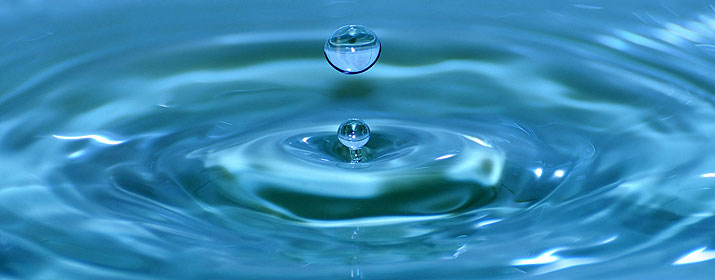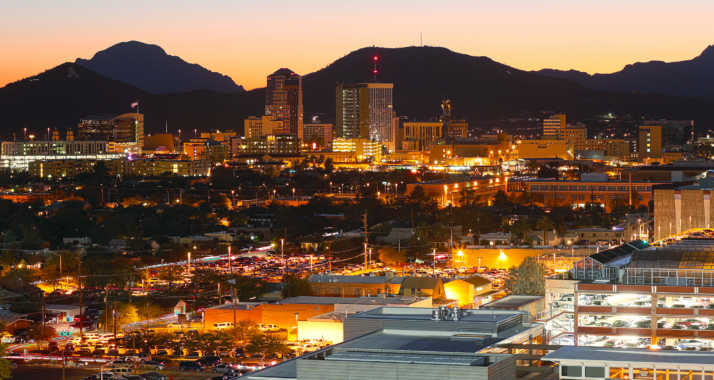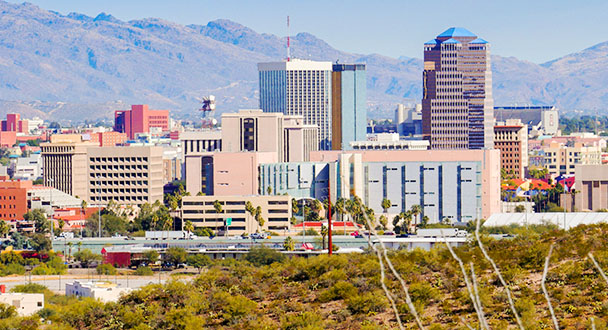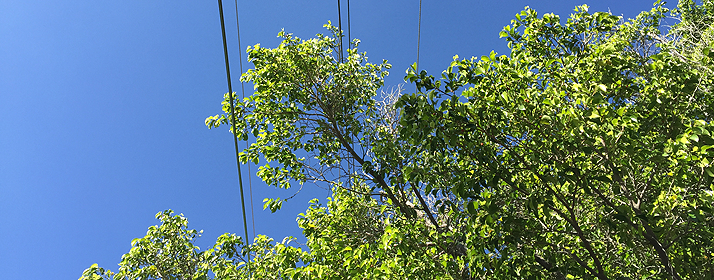
With the goal of greater sustainability, Tucson Electric Power is taking steps to conserve as much water as possible in our power generation operations, as well as throughout our office facilities and grounds.
“Water is a precious resource in the desert, so everything we can do to reduce our water use makes good sense from both an environmental and business perspective,” said Catherine Schladweiler, TEP Principal of Environmental Policy and Sustainability.
The Sundt plant also recycles water for use in the cooling towers, said Dylan Bearce, Director of Tucson Power Production. “We do everything we can to reuse condensed steam and collected storm water to produce electricity, while minimizing the amount of water we need to pump from wells. We also repair leaks quickly and adhere to good maintenance practices to reduce water usage.”
With TEP’s replacement of two units at the Sundt plant with 10 new natural gas-fired reciprocating internal combustion engines (RICE) in late 2019, the facility expects to reduce its annual water use by nearly 70 percent. “The RICE engines have a closed-loop system that results in low water losses and makeup requirements,” Bearce noted.
The new RICE generators are not only 40 percent more efficient than the units they replaced, but also reduce nitrogen oxide emissions by 60 percent – contributing to cleaner air – and provide flexible power generation to support the company’s use of intermittent wind and solar energy.
The Springerville plant, which is operated by TEP and shared with two other electric utilities, is a Zero Liquid Discharge facility. All of the water it uses and wastewater that it produces is used and recycled, including some that assists with dust suppression.
“All of the water that we take and use is pH balanced and put into holding ponds,” explained Walter Yosin, SGS Environmental Superintendent. “In the ponds, you’ll see ducks and water fowl. We do everything in our power to be responsible with our water use and protect the environment.”
With the eventual retirement of TEP’s two Springerville units and our coal-fired units at Four Corners and San Juan generating stations, TEP will reduce its surface and groundwater use by 70 percent over the next 7-12 years.
TEP also conserves water in its office facilities and grounds. Built in 2011 to LEED Gold standards, the company’s headquarters building in downtown Tucson features low-flow toilets, motion-sensor faucets and a 170,000 gallon cistern for capturing rainwater and water from the building’s cooling tower basin for irrigating landscaping.
Each year, about 191,000 gallons of rainwater along with recycled water from the building’s cooling tower basins is captured in the cistern and used to water landscaping. Using the basin water as a backup for the cistern reuses water that would normally drain to the city sewer.
“Water in the Tucson basin is managed to ensure there’s enough water to serve our population for at least the next 30 years, but we need to do our part to conserve this valuable commodity,” Schladweiler said, “As we continue to diversify our energy portfolio with additional renewable sources, we will continue to realize significant water savings.”






